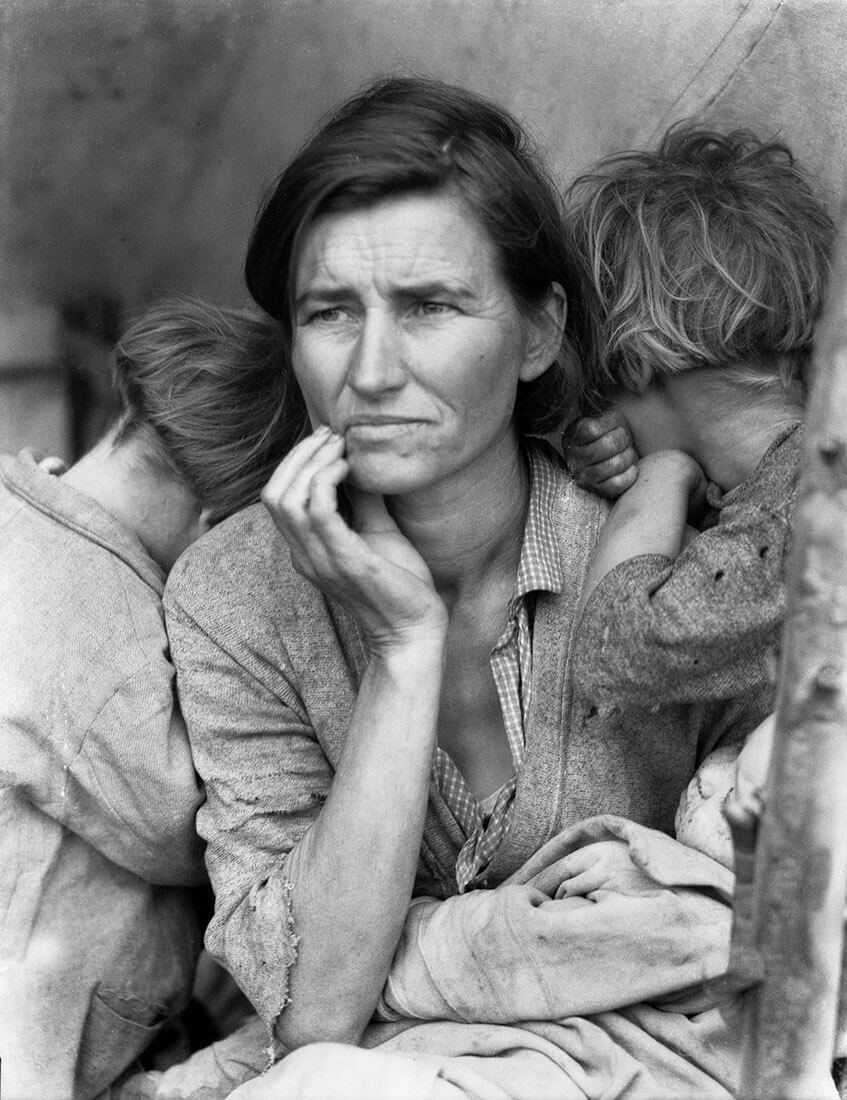This photograph was taken in 1936 by Dorothea Lange who was employed by the U.S government’s Farm Security Administration program formed during the great depression in order to bring to the public attention the issue of poverty and hunger as well as provide help to farmers living in those conditions. Lange encountered a woman named Florence Thompson and her children in a camp for field workers all of whom were devastated by the failure of their pea crops. According to Lange, the woman was a mother of seven, her first husband died from tuberculosis while she was pregnant with their sixth child. The family didn’t live on the camp, they were stuck there as they have sold their tires to buy food. Some claim that the backstory was simply fabricated by Lange to seem more appealing and dramatic to the public. Lange definitely achieved the goal as the photograph became on of the most iconic representations in the newspapers and magazines of the migrant farm workers during the great depression.

The mothers expression is the main point of the photograph, the leading line is the hand placed on her face to navigate the viewers eyes to the main point. The mothers expression conveys the worry about the uncertain future, just like the viewers uncertainty of what is or isn’t in the photograph, what the mother sees and what we cannot see. This leaves plenty of room for our imagination to work and wonder just like the mother. In order to focus the attention on the mother the children’s faces are turned away.
The background is blurred to let the viewer concentrate on the subjects of the photograph. The image was converted into a black and white image to remove any distraction that might be caused by colour and to shift the emphasis onto other elements such as textures and shapes. Because of that we see all the details on the mother’s face such as wrinkles that indicate stress and worry or the rough texture of the clothing the brain associate’s with unpleasant emotions. The light in this photograph is also important. It creates shadows on her cheek bones making her look thinner, starved. In addition the black and white tone contrasts in a way, making the subjects look soiled and dirty. The lack of hygiene is often associated with poverty and indicates that the mother works hard, long days at the farm. The messy textures in the childrens hair also indicates lack of hygiene.

